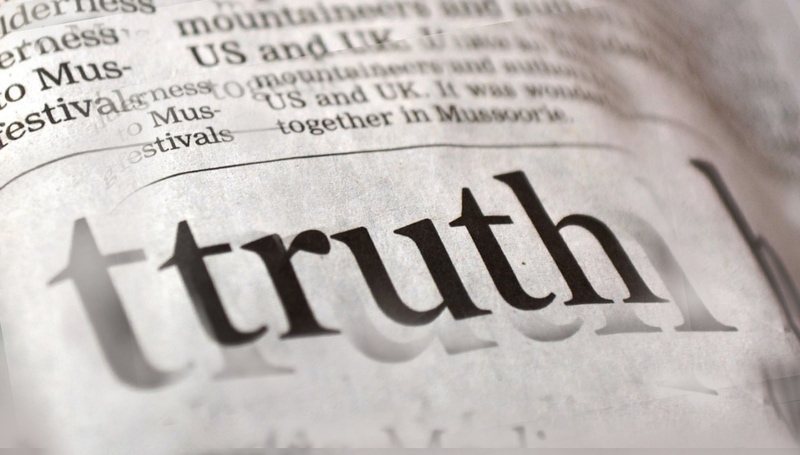Preserving the future of reputable news outlets is the shared responsibility of both media and advertisers
When did the term “fake news” begin to permeate everyday conversation?
In an informal poll of friends and colleagues, almost everyone said, “sometime in 2016.” And when asked, “how do you distinguish between real and fake news?” the entire group answered the same way: they check reliable news brands for verification.
And herein lies a serious problem.
There is an environmental crisis in the professional news media business. So-called “reliable” news sources are slowly becoming extinct. In the past decade, U.S. newsroom employment declined 25 percent overall (Pew Research), and among newspapers, that decline has been a devastating 47 percent. Since 2004, more than 1,800 local newspapers have shuttered (Univ. Of North Carolina), and legacy giants like Tribune, Time Inc. and Gannett have all faced radical reorganization or consolidation. The commercial funding model for reliable, professional news is eroding. Facts are becoming an endangered species. Trusted news environments are shrinking as quickly as polar ice.
Truth doesn’t come for free
Real news is expensive. Fact-checking and integrity comes with a price tag. Whereas innuendo, rumor and even deliberately misleading content costs far less to disseminate. The business model for real news requires a lot more support than the one for fake news.
I believe that two media industry trends are exacerbating the already struggling professional news business by redirecting funding away from trustworthy news towards purveyors of far less reliable information:
Audience-buying in programmatic markets. Many advertisers favor audience scale over context in open programmatic markets. Programmatic budgets disproportionately finance long-tail content networks and major platforms (who take no responsibility for the content they distribute) over smaller-scale professional news publications.
Aggressive brand-safety measures. Advertiser hypersensitivity to brand safety is having the unintended consequence of choking off funding from professional news. Research suggests, however, that these tactics are unnecessary. Newsworks concludes that users are more engaged with ads in professional news editorial content, and that hard news does not in fact negatively impact consumer brand perception in trusted media environments (see The Hard News Project). Blocking ads from news at the domain level or by using extensive keyword blacklists—often exceeding one-thousand words—results in far too much collateral damage.
It’s marketers’ responsibility, too
Certainly, there can be no argument that the professional news media business has a lot to do to stabilize its own foundational economics. However, I believe that the sustainability of news is a shared opportunity—and responsibility—that aligns with the interests of the marketing community.
For one, research clearly demonstrates the effectiveness of advertising in trusted environments. In 2016, comScore concluded that ads placed within professional content deliver 300 percent better mid-funnel favorability, consideration and recommendation metrics. Display ads on premium publisher sites experienced 67 percent higher brand lift. And IAS research concluded that consumers consider ads 74 percent more “likeable” when seen on high-quality sites. Because professional news publications tend to attract well-educated, high-income readers—who, for many brands, are their most valuable audiences—marketers should want to embrace this important part of the media ecosystem for its performance potential alone.
But there is a more insidious climate trend that makes this conservation effort even more urgent. According to Northeastern University research, 36 percent of college students said that the threat of fake news had made them distrust the credibility of any news. And 45% were not confident that they could readily distinguish between real and fake news.What’s at stake is consumer trust, and at a time when the foundations of American democracy, an informed citizenry and freedom of speech are being challenged.
How can we play our part in sustaining trusted media?
I advocate for a more granular approach to brand safety and suitability that helps sustain the economic viability of on-target professional news without the collateral damage of domain-level and keyword blacklists.
The time has come for brands to rethink the value of trusted, professional content and to prioritize context in their targeting parameters. Research shows that ads in both hard and soft news environments deliver strong engagement, emotional intensity and higher levels of memory encoding—all of which should increase ad effectiveness and performance.
And in the name of trust, advertisers have the power to reduce the spread of misinformation by withdrawing media dollars from platforms that enable its distribution. Consumers are nearly three times less willing to associate with brands that advertise alongside unsavory, offensive content (see Magna’s Brand Safety Effect). And according to Edelman, 48 percent of consumers feel it is a brand’s own fault if their advertising appears near inappropriate social media content. Simply said, advertisers put their brands at risk by placing their media budgets in the hands of platform providers that fail to take full responsibility for the content they distribute.
It is a challenging time for trusted media—and by default, the advertising model that sustains it. Our ecosystem is at risk. The time is now for each of us to play our part in reversing the slow truth decay that is threatening the environment of professional news. By taking the lead in aligning advertising budgets with trusted content, advertisers are, themselves, aligning with a higher value—the pursuit of truth.




